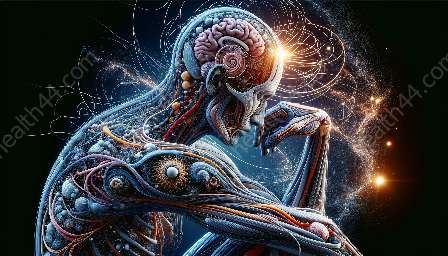The respiratory anatomy is a vital aspect of health education and medical training, encompassing the structure and function of the respiratory system, including the lungs, airways, and diaphragm. This topic cluster aims to provide a comprehensive overview of respiratory anatomy in an engaging and real way.
The Importance of Understanding Respiratory Anatomy
Respiratory anatomy is crucial for health education and medical training as it forms the foundation for understanding respiratory diseases, disorders, and treatments. By comprehending the intricate structure and function of the respiratory system, healthcare professionals can effectively diagnose and treat respiratory conditions, ultimately improving patient outcomes.
Exploring the Structure of the Respiratory System
The respiratory system consists of several key components, each playing a crucial role in the process of respiration. The primary structures include the:
- Lungs: Organ responsible for gas exchange, where oxygen is absorbed into the bloodstream and carbon dioxide is removed.
- Airways: Passage through which air travels to reach the lungs, including the trachea, bronchi, and bronchioles.
- Diaphragm: Dome-shaped muscle that separates the chest cavity from the abdominal cavity and aids in the breathing process.
By delving into the anatomy of these structures, individuals can gain a deeper understanding of how the respiratory system functions to sustain life.
The Lungs
The lungs are vital organs for respiration, housing the bronchial tree and alveoli, where gas exchange takes place. Understanding the anatomy of the lungs involves learning about their lobes, bronchopulmonary segments, and blood supply, which collectively contribute to their function in oxygenation and ventilation.
The Airways
The airways, including the trachea, bronchi, and bronchioles, form a complex network responsible for delivering air to the lungs. Each part of this intricate system has a distinct anatomical structure that supports its function in maintaining a clear pathway for air exchange.
The Diaphragm
The diaphragm is a muscular structure that plays a pivotal role in the breathing process. Its anatomy includes an understanding of its attachments, innervation, and movement during inhalation and exhalation, highlighting its significance in respiratory function.
Implications for Health Education and Medical Training
Integrating respiratory anatomy into health education and medical training programs can enhance the knowledge and skills of future healthcare professionals. By providing comprehensive education on respiratory anatomy, students can develop a deeper understanding of normal respiratory function and recognize abnormalities that may indicate underlying health issues.
Furthermore, medical professionals can utilize their knowledge of respiratory anatomy to perform accurate assessments, interpret diagnostic tests, and develop effective treatment plans for respiratory conditions. This underscores the importance of incorporating respiratory anatomy into medical curricula to produce competent and proficient healthcare providers.
Conclusion
Respiratory anatomy serves as a fundamental aspect of health education and medical training, offering insights into the structure and function of the respiratory system. By embracing a comprehensive understanding of respiratory anatomy, individuals can contribute to improved patient care and outcomes, making it an indispensable topic in the field of healthcare.


